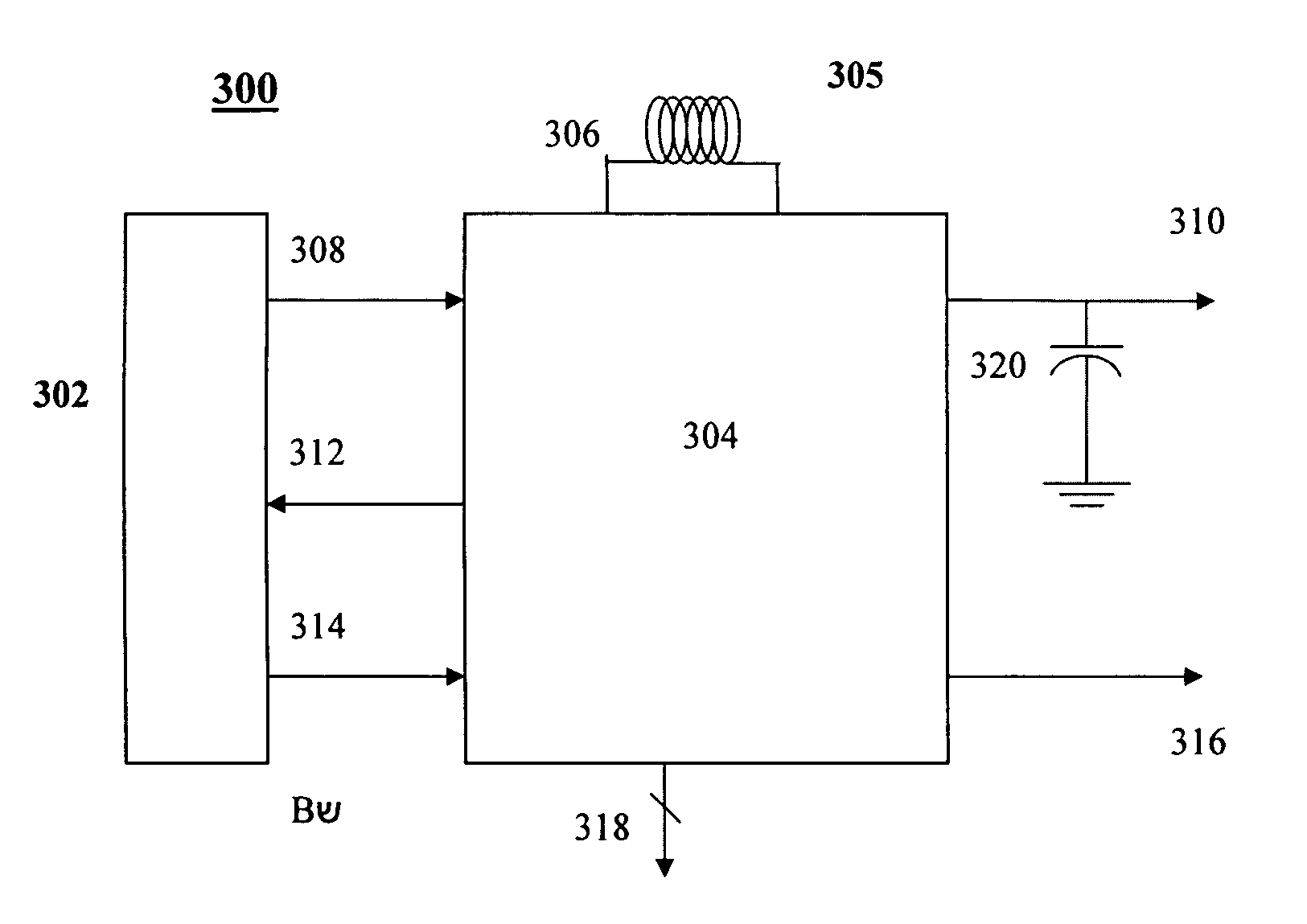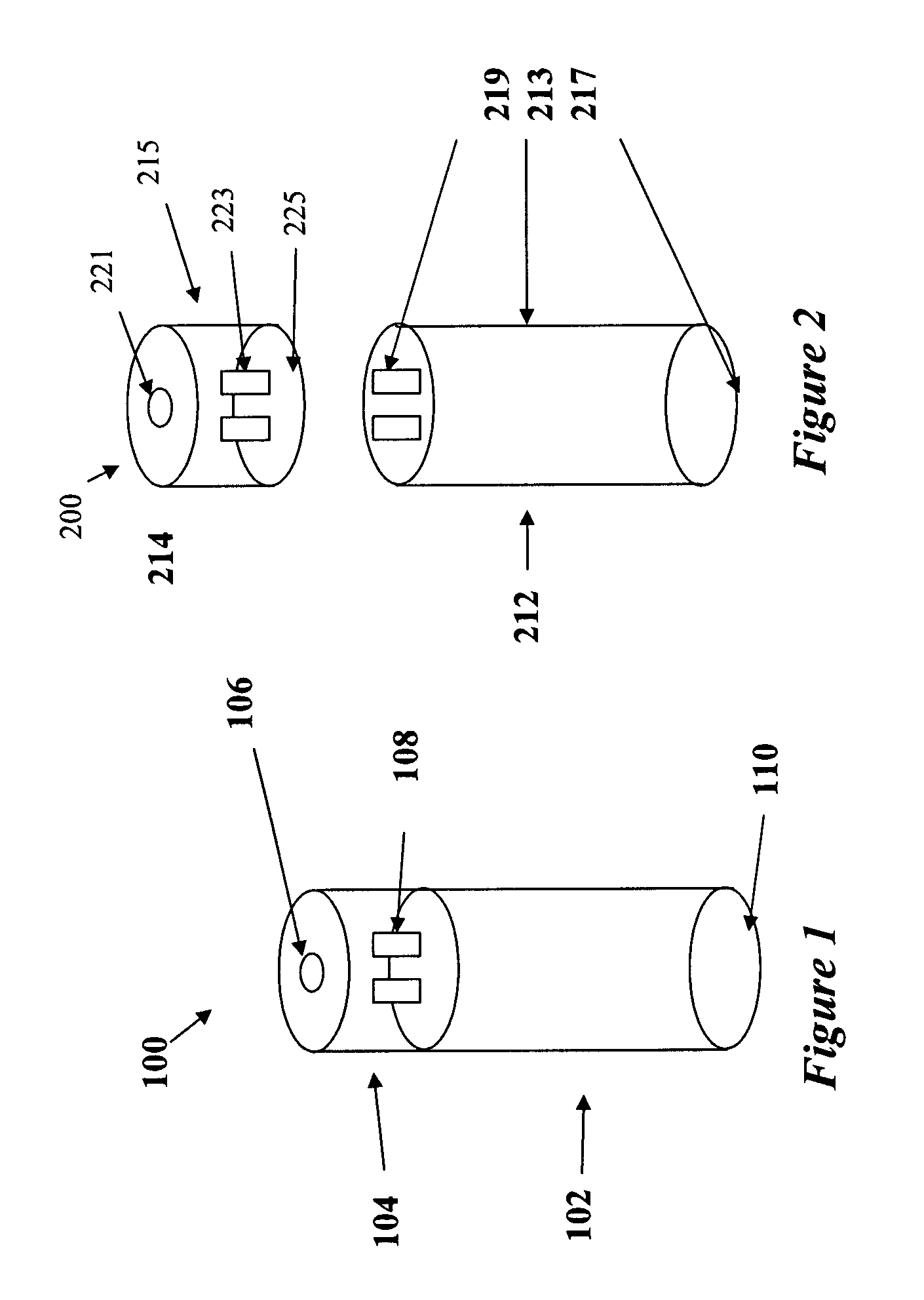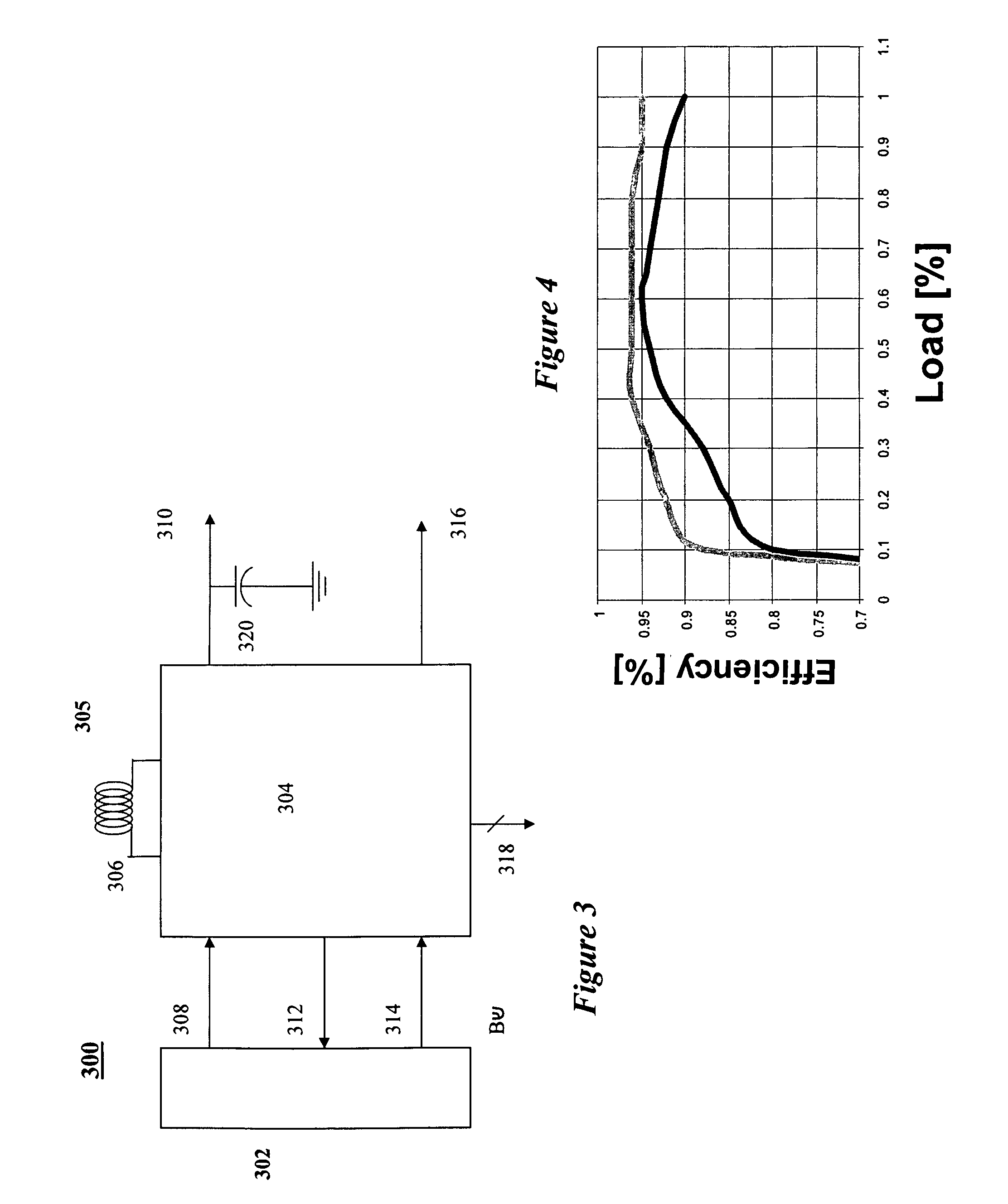Battery power delivery module
a power supply module and battery technology, applied in emergency power supply arrangements, semiconductor/solid-state device details, transportation and packaging, etc., can solve the problems of high toxicity of used in its production, numerous drawbacks, environmental problems,
- Summary
- Abstract
- Description
- Claims
- Application Information
AI Technical Summary
Benefits of technology
Problems solved by technology
Method used
Image
Examples
Embodiment Construction
[0024]Aspects of the present invention are directed to an intelligent battery including one or more battery cells together with digital power management and conversion electronics. The intelligent battery provides a substantially constant voltage required by the hosting device and manages the charge / discharge operations. As a result, the hosting device may be simplified and different battery chemistries may be made compatible with a particular hosting device.
[0025]In one aspect of the invention, a single package is provided, which includes both battery cell or cells and a power management integrated circuit (IC). In one aspect of the invention, the package includes two separate modules, one including the battery cells and the other including the power management IC such that the battery cells may be replaced. The power management IC that is used may be included in the host device, thus enabling the host device to use different battery cells. In one aspect, a safety circuit monitors ...
PUM
 Login to View More
Login to View More Abstract
Description
Claims
Application Information
 Login to View More
Login to View More - R&D
- Intellectual Property
- Life Sciences
- Materials
- Tech Scout
- Unparalleled Data Quality
- Higher Quality Content
- 60% Fewer Hallucinations
Browse by: Latest US Patents, China's latest patents, Technical Efficacy Thesaurus, Application Domain, Technology Topic, Popular Technical Reports.
© 2025 PatSnap. All rights reserved.Legal|Privacy policy|Modern Slavery Act Transparency Statement|Sitemap|About US| Contact US: help@patsnap.com



